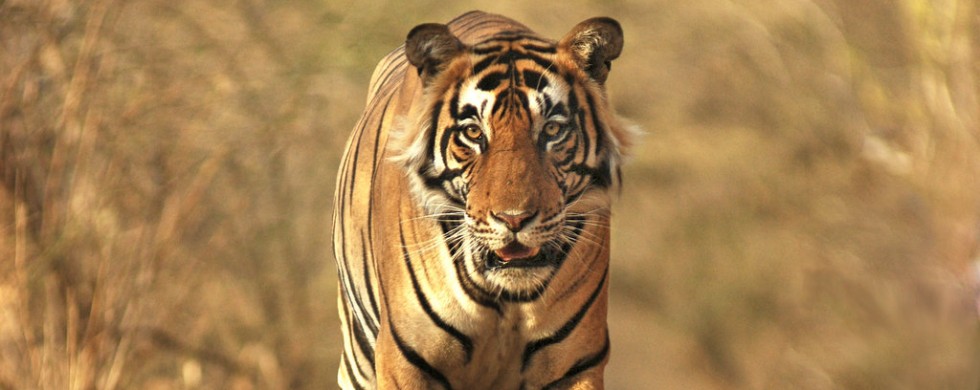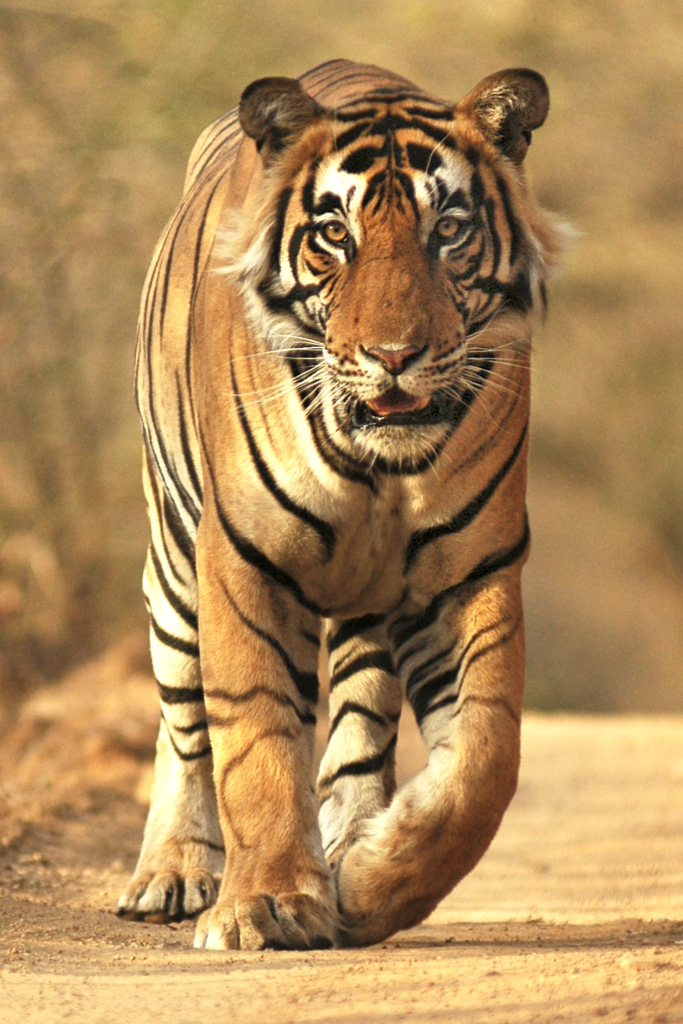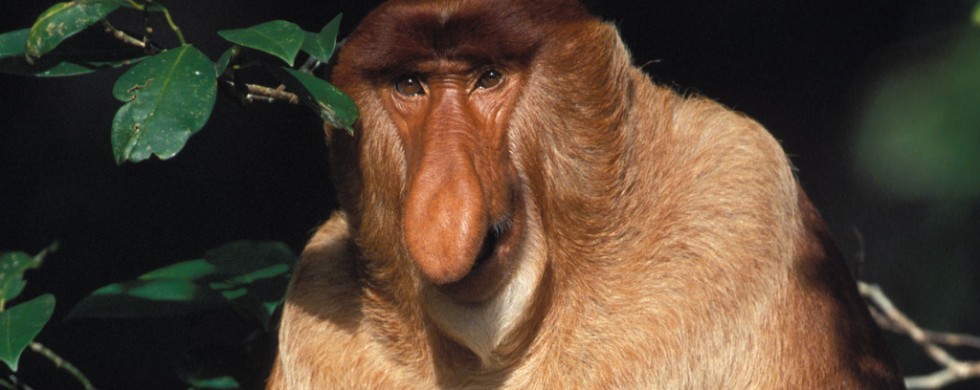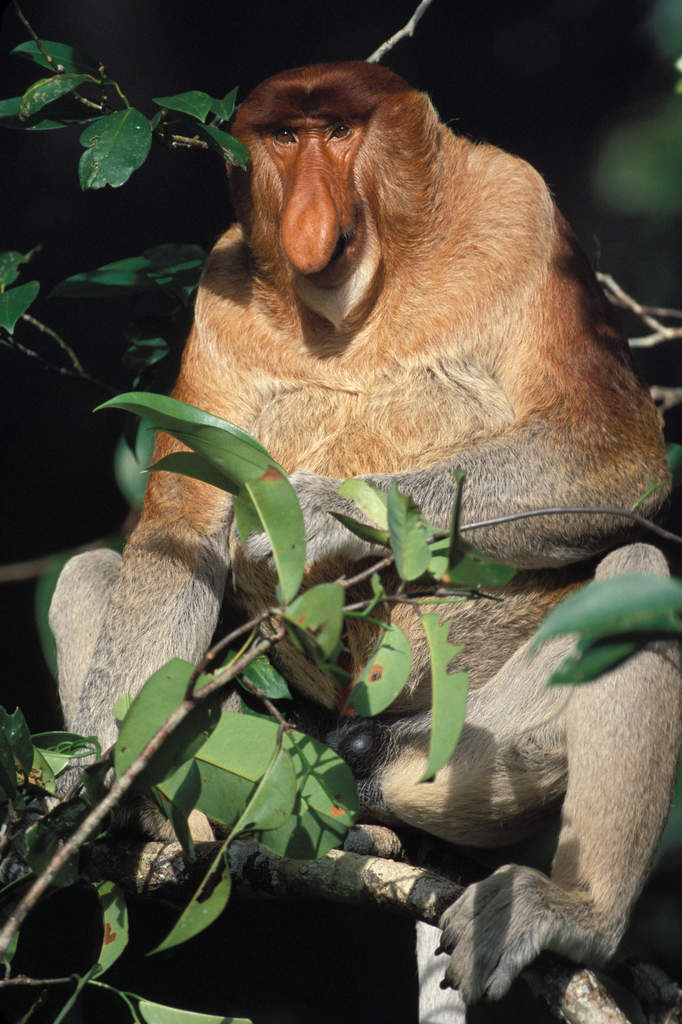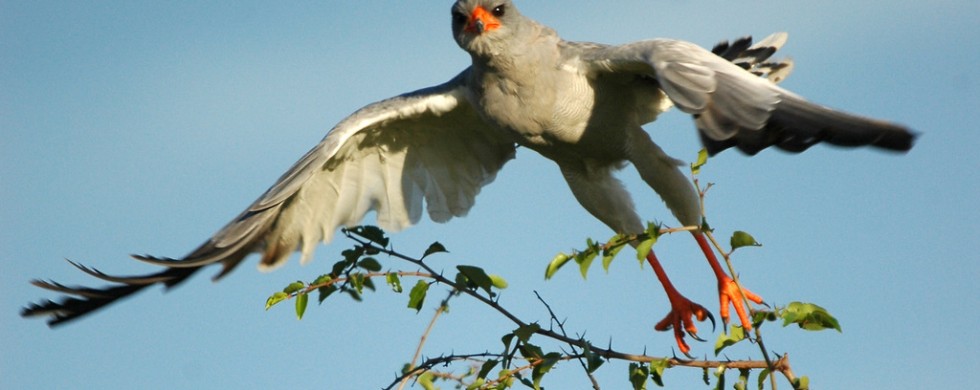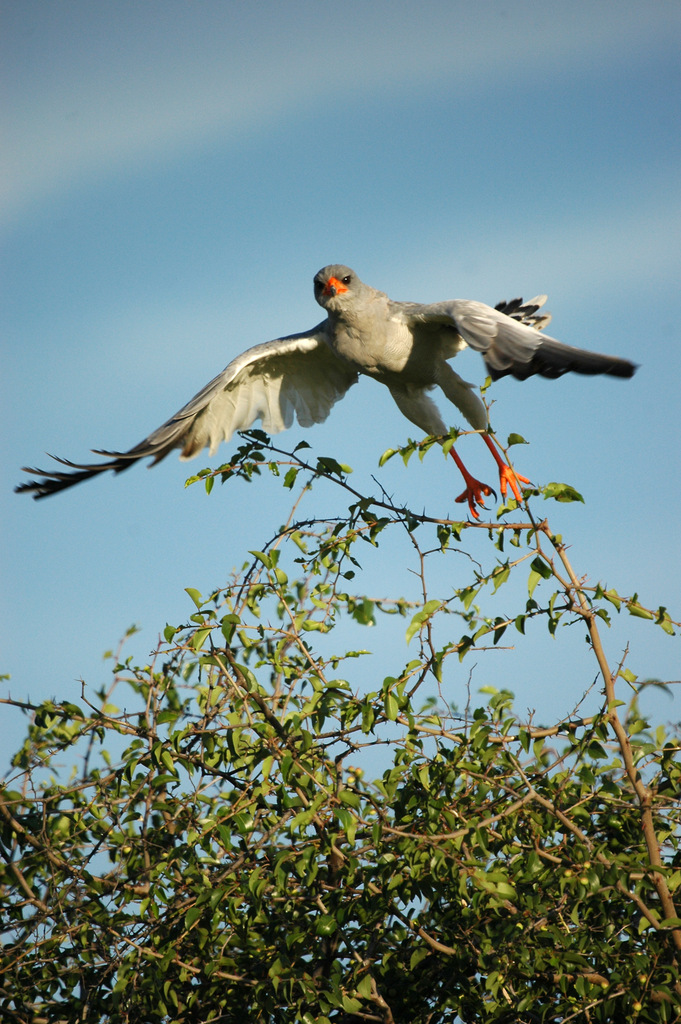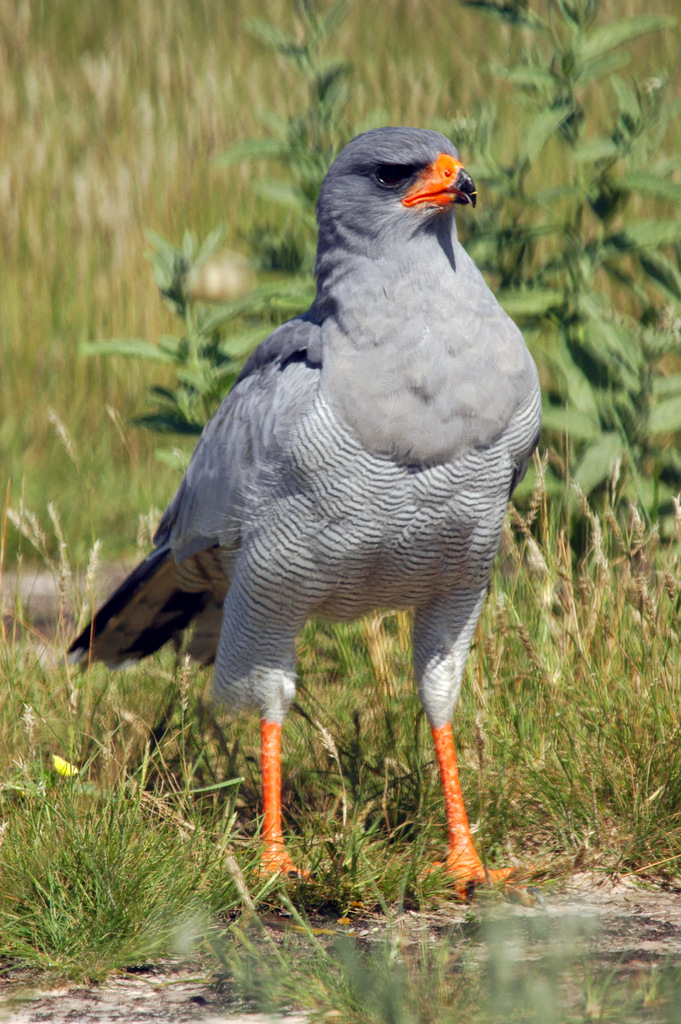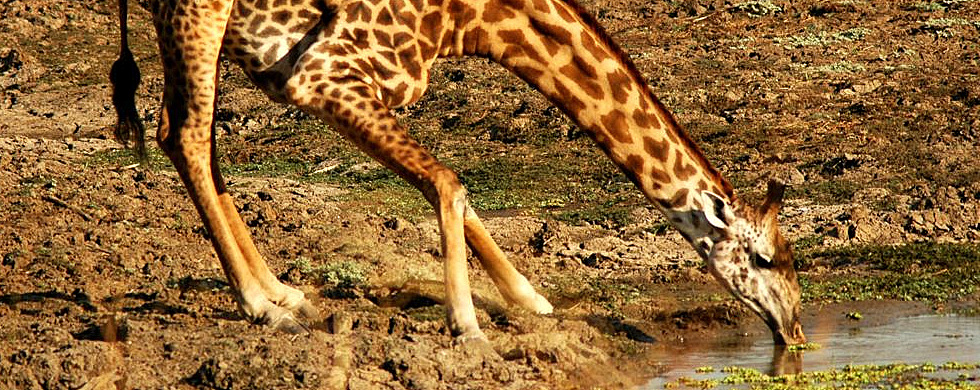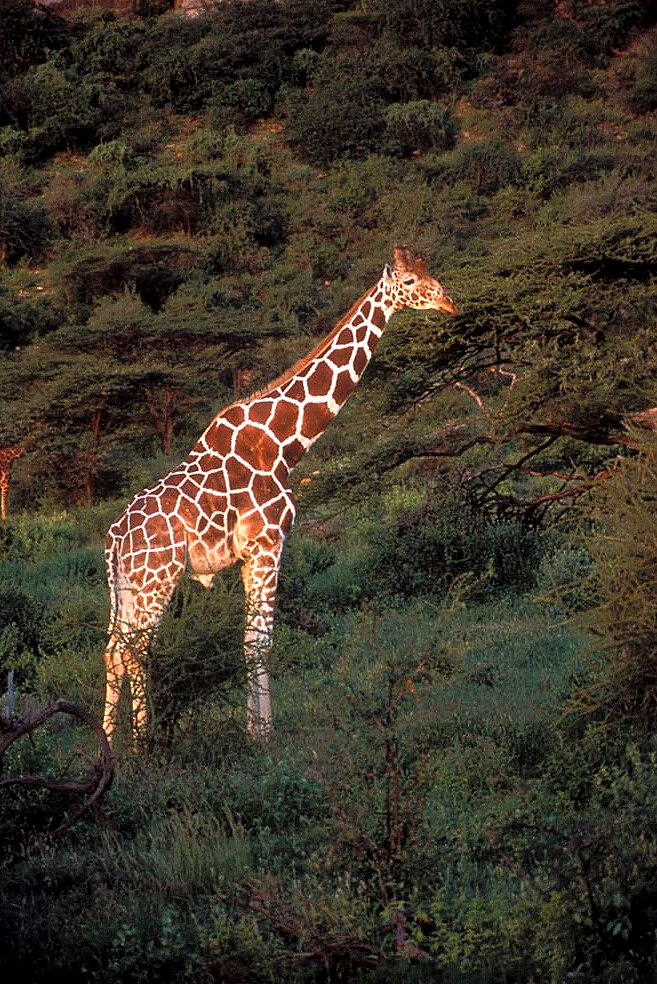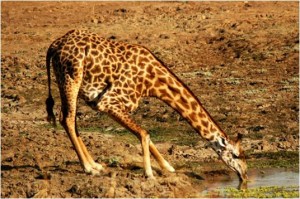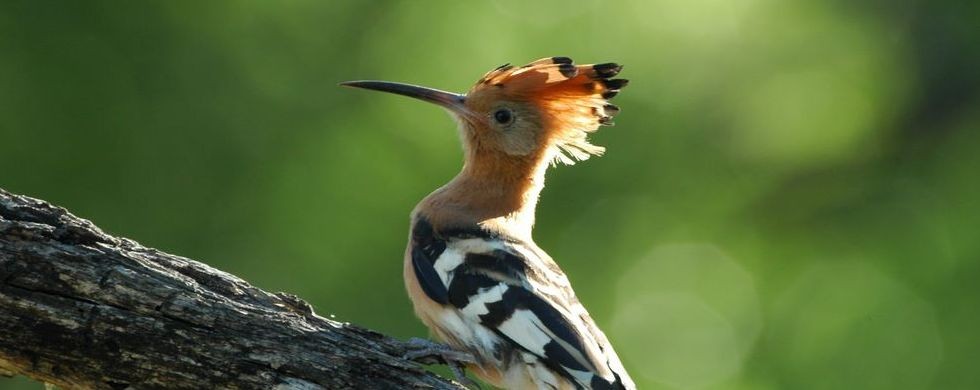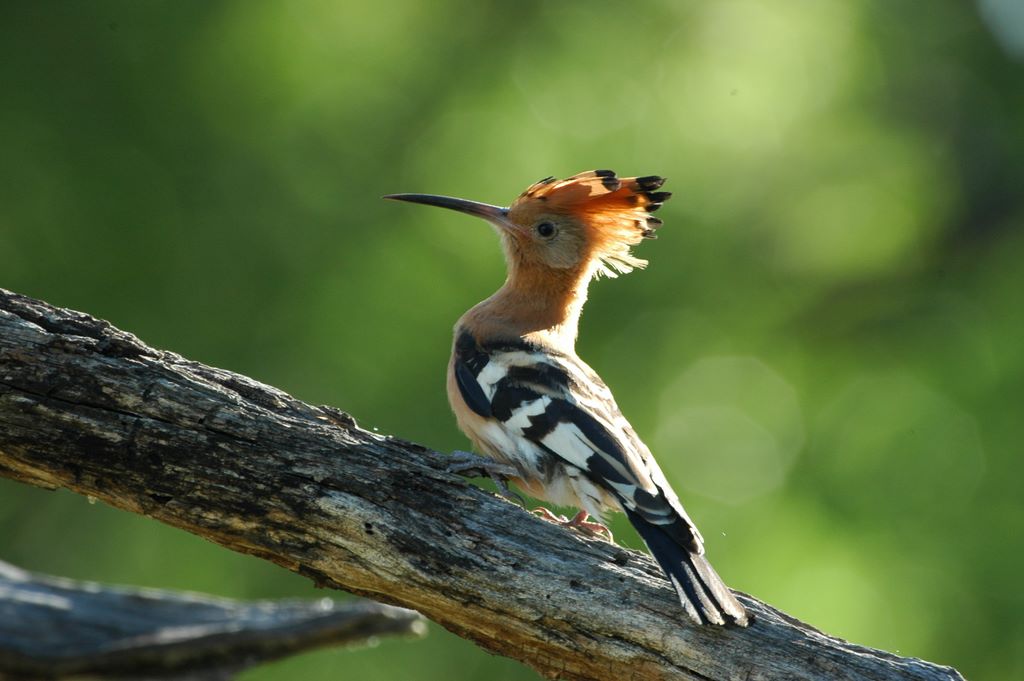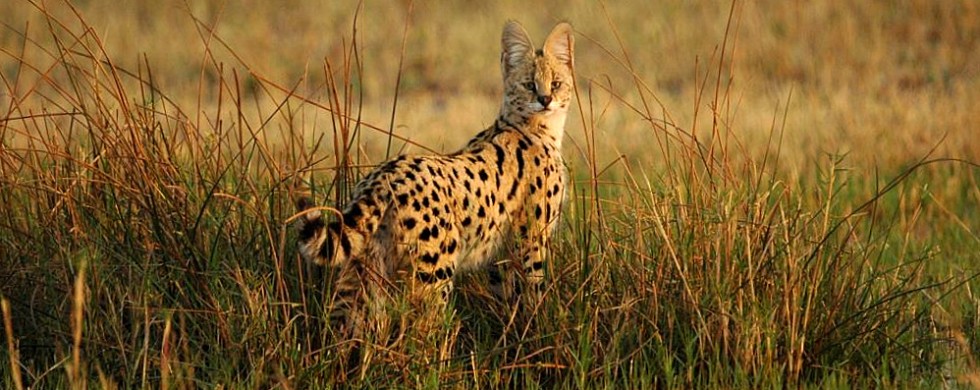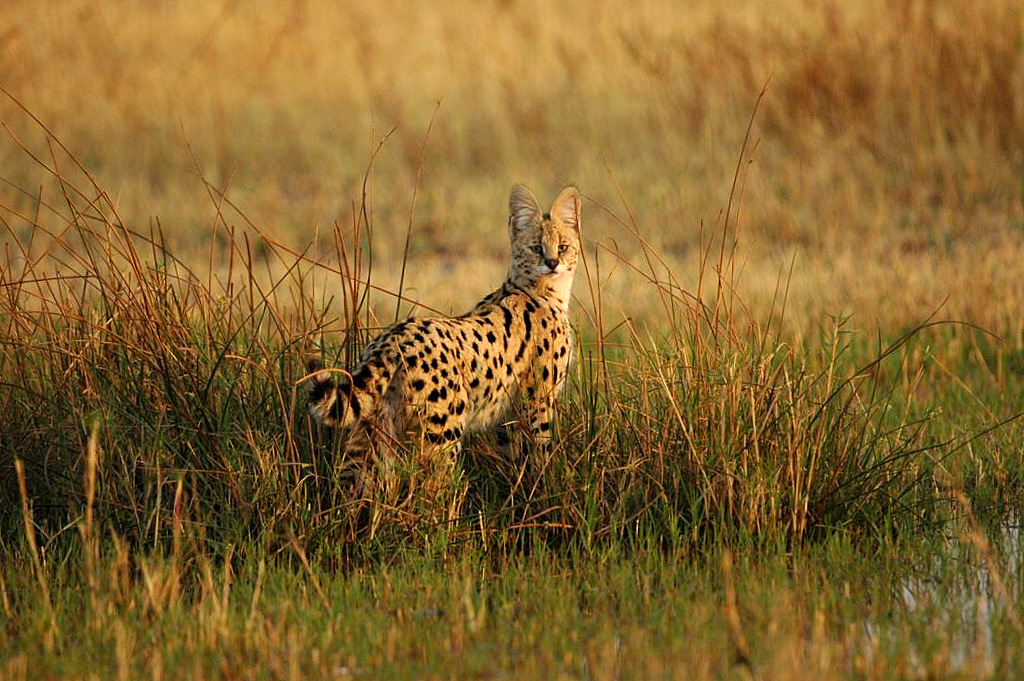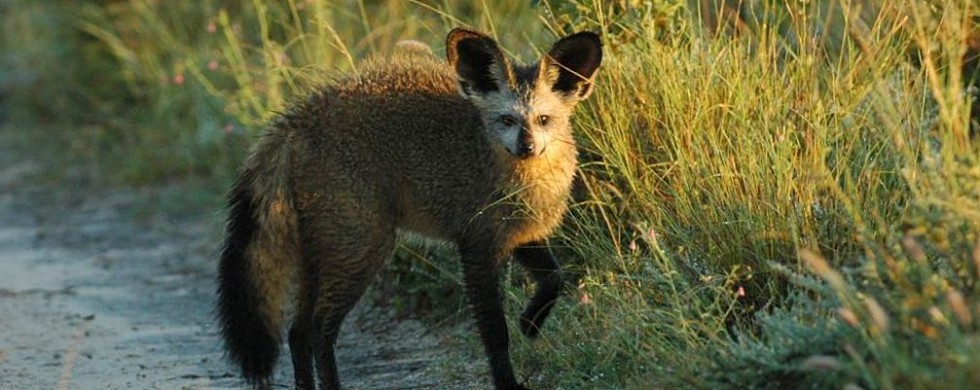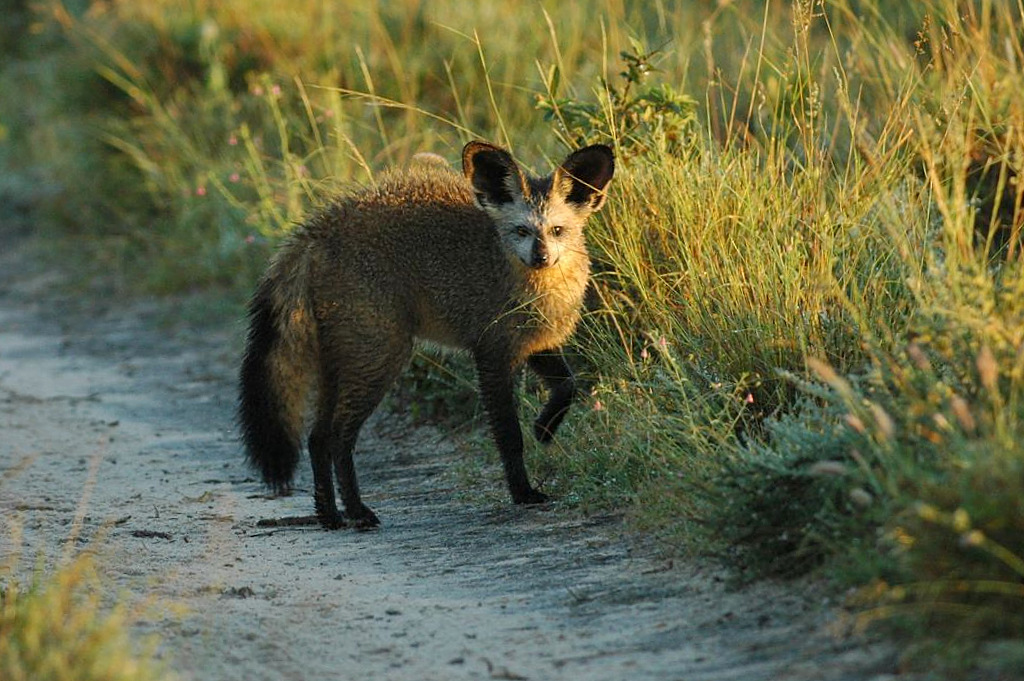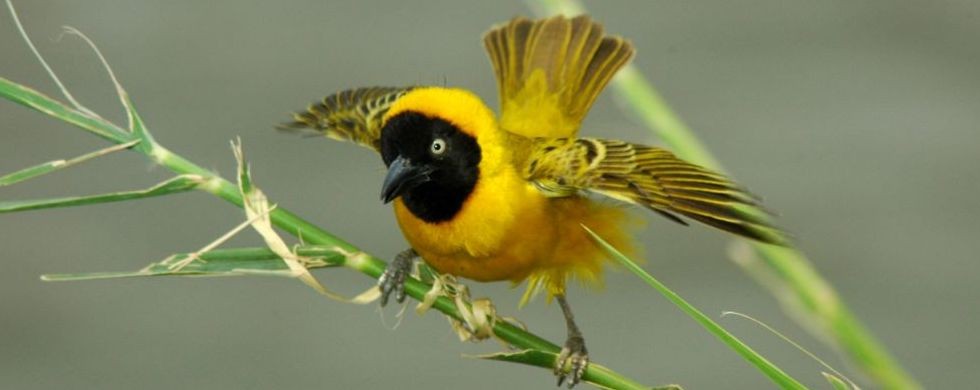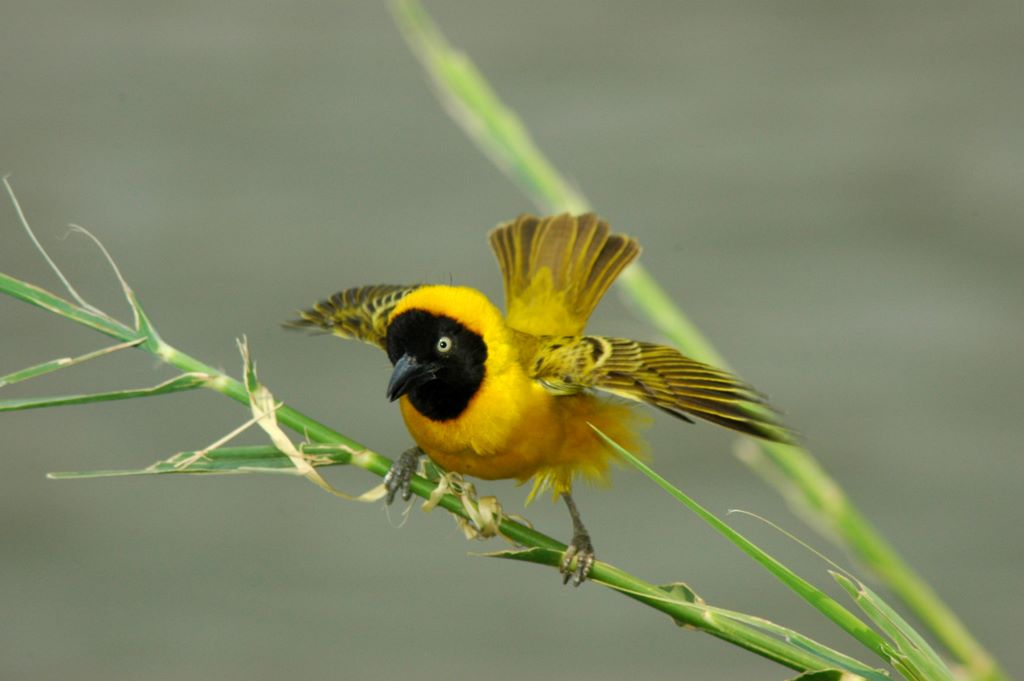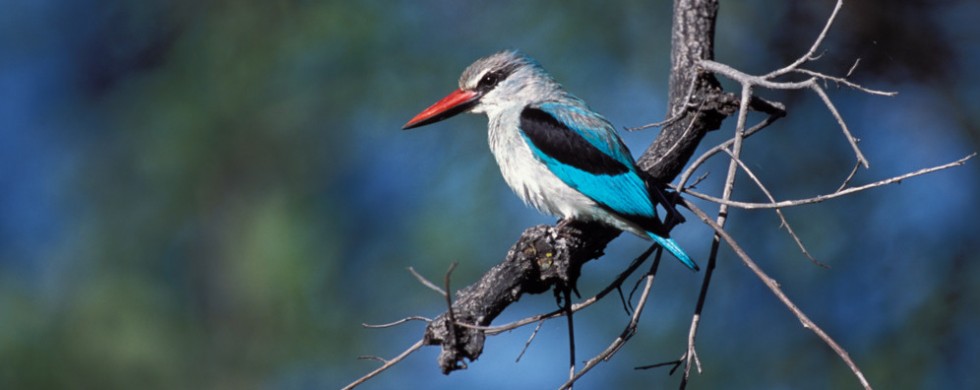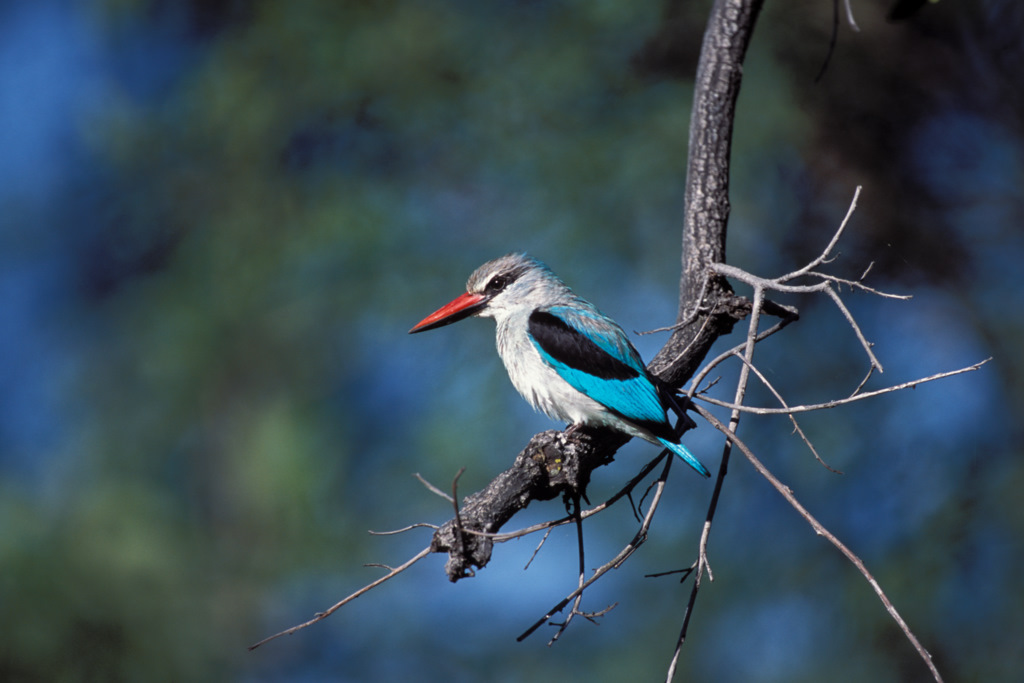15
Shot of the Month – August 2011
No introduction is required for this fellow.
The tiger is one of the most widely recognized animals in the world. Humans have been mesmerized by this apex predator for thousands of years. You could spend a lifetime cataloging all the historical, mythological, religious, literary, and cultural references to the tiger.
The tiger is one of 12 Chinese zodiac animals. It is an earth symbol. Tigers are the national symbol for at least 6 countries and are found on many national flags. Tigers are an important symbol in Buddhism. Tigers play every sport you can imagine: the Detroit Tigers (baseball), the Balmain Tigers (Australian Rugby), the Sunipret Ice Tigers (German Hockey), the UANL Tigers (Mexcan soccer), and well, there are hundreds more. Elvis thought they played a bit rough and the “Eye of the Tiger” gave Survivor a #1 song in 1982. A tiger was an important character in The Jungle Book, was a buddy of Pooh, and a tiger was found on a lifeboat in the Life of Pi. Calvin’s best friend was a tiger and a tiger named Tony helped sell a lot of cereal. From cultural god to Wall Street hawker, the tiger has been voted, at least in one poll that included 73 countries, as the world’s favorite animal. Yes, even more popular than Lassie and her canine brethren.
Normally from here, I would attempt to beguile you with a host of fascinating facts and tidbits about the tiger’s amazing physical traits or abilities. Or regale you with the challenges and risks of getting this photo of a Bengal Tiger in Ranthambore National Park in India –there were a few.
But none of that matters. What matters is that you understand how completely and utterly we have destroyed a species that we seemingly love and admire so much. Take a marker and color in most of Asia on a map – a huge swath of the land mass of our planet. That is where tigers used to live. Now tape that map on the wall and throw 6 or 7 darts at that colored area. That will give you a sense of the space where tigers now have to live.
In 1900 there were 100,000 tigers in the wild. There are now around 3,000.
In just more than a lifetime 97% of tigers have been wiped off the planet. The Bali tiger went extinct in the 1940s. The central Asia tiger vanished in the 1970s. We killed the last tiger in Java in the 1980s. The South China Tiger was killed off in the 1990s (a few still exist in zoos). The six remaining subspecies are struggling to survive.
We are destroying the forest they need to live in. We hunt and kill them to make aphrodisiacs. We kill them to make coats.
Wow, imagine how we would treat the tiger if it wasn’t our “favorite” animal!
People are finally starting to notice. Leaders from the 13 countries where tigers still exist attended the Global Tiger Summit in St. Petersburg, Russia in late 2010 to launch a campaign to try and double the population of tigers by 2022. India has been working for quite a few years to try and protect its tigers from poaching and has been increasing the areas that are protected for tigers. The World Wildlife Fund (WWF) has been working tirelessly to raise awareness.
Unless we take action soon, tigers will become our favorite memory.
Want to do something to help? Click here for ideas from WWF on actions you can take.
15
Shot of the Month – July 2011
For five days and nights, our wooden boat worked its way up the Sekonyer River through the oppressive heat and pallor of the Kalamatan jungle on the Island of Borneo. (If you can remember Martin Sheen’s trip up the Nung River in the Cambodian Jungle in “Apocolypse Now” you will have a good sense of what the conditions were like – though, luckily, without the gunfire.)
The primary goal of the trip was to see orangutans but along the way, we spotted this homely fellow, a Proboscis monkey, among the trees along the river’s edge.
Pro-what? New word for Michael. For you other non-scrabble players:
Proboscis: /proʊˈbɒsɪs/) an elongated appendage from the head of an animal, either a vertebrate or an invertebrate, e.g. the trunk of an elephant or the feeding tube of a butterfly.
Scientists aren’t sure but they assume that the larger the nose, the better the luck in attracting the lady monkeys. Go figure. The females also have largish noses but they are not as pronounced as in the males. Proboscis monkeys have the largest noses of any primates. The male vocalizes through the nose with a kee honk sound. Really, I couldn’t make this stuff up.
And a gentle reminder, it is not polite to stare.
Adding to the Homer Simpson look, the Proboscis monkey has a pot belly. Their stomachs are large to accommodate several compartments that use bacteria to digest the cellulose of the leaves of mangrove and pedada trees. When full, the stomach can represent 1/4th of the animal’s body weight! These leaves represent 95% of their diet.
Dining primarily on leaves allows the monkeys to remain safely high up in the trees and avoid predators lurking on the ground.
Proboscis monkeys are agile climbers but they are also quite at home in the water. They can often be spotted walking upright across stretches of water in the mangroves. Fishermen have even spotted the monkey swimming up to one mile offshore in the ocean. Proboscis monkeys actually have partially webbed feet – a testament to how much time they spend in or near the water.
In Indonesian (Borneo is part of Indonesia) this monkey is named orang belanda which means “Dutchman.” Seems the locals thought the Dutch, who colonized this part of the world, often had large noses and pot bellies like their local monkey. Sounds like payback if you ask me.
There you have it, the web-footed, pot-bellied, elephantine-esque primate otherwise known as the Proboscis monkey. Another beautiful, uh, well, striking sight from the natural world.
15
Shot of the Month – June 2011
This month we visit with the (Southern) Pale Chanting Goshawk (SPCG). Doesn’t exactly roll off the tongue, does it?
I had never heard of such a bird and I was surprised when I first spotted this striking fellow while visiting the Central Kalahari Game Reserve in Botswana. SPCGs are distributed across southern Africa and prefer dry, open semi-desert environments. That would explain my lack of exposure to this fellow — I had not visited many southern African countries and I had explored even fewer game parks located in or near the deserts of these countries.
You can see in this lower photo the dapper marking of this raptor. Take note of the fine striped chest and leggings. His chest is an exquisite, delicate grey. And throw in a striking dash of color with those orange legs and black and orange beak. On several occasions, I almost injured my neck as I snapped my head around as my eyes were drawn to an orange beacon at the top of a tree or bush. Each time it was an SPCG. In the late afternoon light, already rich with hues of orange from the sun, his beak and legs seemed to glow with an other-worldly force.
SPCGs dine primarily on lizards, but will also eat small mammals, birds, and large insects. When hunting the SPCG will often land near his prey and then chase his victim down on foot.
It’s a ridiculous sight really, watching such a large bird sprint from here to there and back again like something out of a keystone cop film. The effect is even greater given that the bird is gussied up like some gangster from the 1940s. Throw in a pair of suspenders and his retro mobster look would be complete.
And who says that Mother Nature doesn’t have a sense of humor…?
15
Shot of the Month – May 2011
Many would look at the image above and say that it was a picture of a giraffe. While this statement would be generally correct, it would also be unfair, or at least unsatisfyingly vague. Many might not realize that there are in fact 9 types of giraffe in the world (all living in Africa) and each is a bit different than the others. The specimen above is a Reticulated Giraffe and is only found in northern Kenya, Somalia, and southern Ethiopia. I photographed this one in Samburu National Park in Kenya. The Reticulated Giraffe is one of the most common varieties found in zoos.
The creature having a drink below is obviously also a giraffe but his/her markings are clearly different. This is a Thornicroft Giraffe that I photographed in South Luangwa National Park in Zambia. There are only about 1,500 Thornicroft Giraffes left in the world and they all live in eastern Zambia.
“Giraffe” also includes:
Nubian Giraffe: Only about 250 remain in the wild and they are found in eastern Sudan and northeastern DR Congo.
Smoky Giraffe: About 20,000 are left in the wild and they are found in southern Angola, northern Namibia, and parts of Zambia, Botswana, and Zimbabwe.
Kordofan Giraffe: Less than 3,000 remain in the wild and they are found primarily in Chad, Central African Republic, and Cameroon.
Maasai Giraffe: These are the giraffes that most people see if they go on safari in East Africa. There are about 40,000 left in the wild and they are found in Kenya and Tanzania.
Rothschild Giraffe: Less than 700 remain in the wild though they are zoo favorites so there is a good chance you have seen one there. In the wild they live in Uganda, parts of Kenya, and in southern Sudan.
South African Giraffe: Less than 12,000 are left in the wild and they are found in South Africa, Botswana, Zimbabwe, and Mozambique.
West African Giraffe: These are the rarest giraffe in the world with a population of less than 220 left in the wild. They are found in southern Niger.
Each sub-species of giraffe has a unique size, color, pattern, and distribution. The next time you see a “giraffe” be sure to dig a bit deeper to find out which particular natural gem you have discovered.
🙂
15
Shot of the Month – April 2011
Do you have someone in your family or perhaps a friend or two in which everything about them seems bigger than life? The way they dress, the way they act, how they talk, the stories they tell, the situations they seem to find themselves in? Well, if you were a bird, your buddy the Hoopoe would be that over-the-top pal. The one shown here was photographed in Botswana.
Check out his dramatic style. His wings and back are painted with striking black and white markings. The head and neck are adorned in a beautiful hue of gold. And then there is that headdress. When excited he will snap it open with great flair and may bob his head up and down to ensure that all take notice.
And these guys really get around. They can be found in Europe, Asia, North Africa, Sub-Saharan Africa and Madagascar. Like true jet setters, those from Europe and north Asia will migrate to warmer temperatures in the tropics during the winter.
Fly in a straight line like the rest of us birds? No, too pedestrian. The hoopoe has a distinctive style – by closing his wings every few beats his undulating flight pattern bobs up and down much like how a cast-away bottle rises and falls with the ocean swells.
Birds spend their time in trees, right? Well, the hoopoe spends much of his time on the ground foraging for something to eat. He uses that long, slightly curved bill to detect and extract insects, particularly insect larvae and pupae, from the soil. Hoopoes are fond of crickets, locusts, beetles, cicadas, and so forth but will occasionally dine on small reptiles, and frogs and may partake in seeds or berries.
And then there is the fighting. Hoopoes are very territorial and the males get into brutal fights and will try and stab each other using those long bills like daggers. Some birds have been known to be blinded during such battles!
Other over-the-top behavior? Oh, there’s more. Female hoopoes raising young produce a foul-smelling liquid that they rub over themselves while in the nest. The young, mother and the entire nest smell like rotting meat. Scientists posit that this wretched liquid deters predators and may act as an antibacterial agent.
And the hoopoe chicks have a very endearing trick up their sleeves. From the age of six days, nestlings can fire streams of feces at intruders and they can hiss like snakes to try and scare off would-be attackers. (Thanks, but I’ll pass on babysitting those little darlings)
And hoopoe are such hobnobs — humans seem to be fascinated by these starlets. Egyptians considered them sacred and their likeness can be found on ancient tombs and temples. Hoopoes are mentioned in the Bible and Koran alike. In Persia hoopoes were a symbol of virtue and they were prominent in the Persian book of poems “The Conference of the Birds.” And they are the national bird of Israel. Harrump. Show-offs.
Such flair, energy, and panache. Yes, hoopoes and their ilk can be tiresome at times. But, I think we all need a few hoopoes in our lives to remind us to dare to be bold and embrace life.
Until next month. 🙂
15
Shot of the Month – March 2011
While all felines are apex predators and rest comfortably at the top of the food chain, most of our attention and admiration go toward the “Big Cats” – lion, tiger, leopard, and jaguar. These are the largest members of the feline family and they are the only ones that can roar. Some folks add the snow leopard, mountain lion, and cheetah to the Big Cat list. (For the record, none of these classifications have any scientific standing)
Then we have the 35 species of “lesser cats.” A term I would find insulting if I was among this group as each of them is quite spectacular in their own, diminutive way. The serval, as photographed here from Botswana, is one such wonder.
Servals are shy and normally out at night so they are rarely observed. We found this one just as the sun was about to rise on a crisp morning in Botswana. Given that servals only stand about 2-3 feet tall they are especially hard to see in tall grass. That is, however, unless they are hunting.
During one safari in Namibia I was slowly driving along when I heard the loud chatter of angry birds. The clatter finally broke through my consciousness and I remembered that sounds can be an important tool in finding wildlife. Why all the racket? Why were these birds so upset? I stopped the car and listened. I followed the sound to the enraged birds and watched as they hovered above the tall grass.
BOING. A serval exploded from the grass in an amazing vertical leap. He leapt up and forward—most likely trying to land on an unsuspecting mouse. BOING. Another amazing vertical leap. BOING…One of my favorite safari memories. Ever.
Servals specialize in locating and eating rodents with their exceptional hearing and sight. And with that amazing jumping ability. Servals can use this skill to leap 10 feet into the air from a sitting position to catch birds in flight! They also dine on fish, lizards, frogs, and insects.
And these cats are good at what they do. Lions are only successful about 30% of the time when they hunt. Serval hunting success rate is 50%. Take that Big Cats!
The mighty serval –the Tigger of the savannah.
Until next month… 🙂
15
Shot of the Month – February 2011
This month we will learn a bit about the adorable, but often hard-to-find bat-eared fox (BeF). I photographed the one shown here in the Kalahari Desert of Botswana.
BeFs are found in one of two distinct populations, either in South West Africa (Namibia, Botswana, certain parts of Zimbabwe, and South Africa) or in East Africa (Tanzania, Ethiopia, Sudan).
Fun February Fox Facts:
- Insectivore: BeFs eat primarily insects! They are the only member of the Canidae family (foxes, wolves, dogs, jackals, and coyotes) to give up eating mammals. BeFs are especially fond of harvester termites (but who isn’t, really?). They also dine on grasshoppers, scorpions, dung beetle larvae, millipedes, lizards, fruits, and eggs. That being said, they really prefer to eat insects.
- Good for Sailing BeFs only stand 12-15 inches tall at the shoulder while their ears can be over 5 inches tall! (Some quick math tells us that their ears represent 25-30% of their total height). Think Dumbo, but as a fox…
- Whispering Won’t Help: Bat-eared foxes hunt by walking slowly, nose close to the ground, with ears cocked forward. As they walk they listen for insects on or under the surface of the earth. How good is that hearing? Well, BeFs can locate termites from the sound they make while chewing on grass. More amazingly they can hear and then find dung beetle larvae chewing their way out of a dung ball located 12 inches underground.
- Termite Control: Reportedly, one BeF can eat over 1 million termites in a year.
- Specialized Jaws: BeF have grown extra teeth to chew up insects. Most foxes have 42 teeth, BeFs have 48. BeFs also have specialized lower jaws that allow for ultra-rapid biting to quickly stun, kill, and eat small insects.
- Dangerous World: Due to their small stature just about every predator picks on the BeF: Lions, leopards, cheetahs, hyenas, rock pythons, and wild dogs. Even large raptors will hunt BeFs.
- Night Life: To avoid the dangers mentioned above BeFs are generally nocturnal. This is not foolproof, however – lions and leopards are also nocturnal.
- On the Road: In a given night a BeF can walk over 7 miles in search of food.
- All in the Family: BeFs tend to mate for life and the males are devoted parents.
The bat-eared fox –the delightful underdog of the plains. Given their good looks, exceptional talents, and commendable behavior you can’t help but root for them.
Until next month… 🙂
15
Shot of the Month – January 2011
Is it a new year already? This weaver bird seems to share my surprise at completing another full rotation around the sun.
The amusing nature of this shot belies the unexpected danger in capturing it. I shot this image while staying at a tented camp on the banks of the Lower Zambezi River in Zambia.
All the other guests, having eaten their lunch, had retired to their tents for some rest. I took the opportunity to stalk around the campsite and see what I could photograph. Our lunch table stood on a small nook of land that jutted slightly out into the river. A simple railing separated the terrace from some reeds on the river bank. During the meal I had noticed that this weaver bird liked coming to the reeds to collect building materials, presumably for a nest under construction. I decided I would use this fellow to experiment with some flash photography techniques. I think the flash may explain some of that startled look.
After taking the shot I turned around and was stunned to find a massive elephant standing only 25 feet away. During my shoot, several elephants had walked into the campsite to feed on fallen fruit and there was a nice collection of fruit near where I happened to be standing. One of the largest elephants stood there and rocked back and forth in my direction. Not a good sign.
I looked around for help. Not a soul. All of the staff had gone off for some rest or to work in the office. Not a single guest to be found. I surveyed my other escape routes. Going forward was not possible as my little “peninsula” was blocked by a large, annoyed, hungry elephant. I glanced back toward the reeds. Below me was the river. I could either leap into the water or try a tricky jump into a small boat that was tied up not too far away. Only Indian Jones could make that leap without breaking a few bones and/or flipping the boat into a watery heap. All the same, I threw one leg over the railing to keep my options open.
I looked at the elephant. He looked at me. I glanced at the river, measuring. This seemed to go on for most of the afternoon.
Luckily, after a very long several minutes the elephant wandered off and began to forage on a different piece of land. Whew. I could now could hear my racing heart.
Perhaps the startled look on the weaver bird had less to do with me and more to do with what was standing just behind me.
Just another pretty picture… 🙂
15
Shot of the Month – December 2010
Now this is a Christmas scene that I can get excited about. I know, you snow-loving, holiday traditionalists and winter-sport zealots will cry foul at such blasphemy, but hey, it’s my site, so pipe down in the back.
This cobalt scene is from a beach in northern Zanzibar. Zanzibar is an island off the coast of East Africa and is a semi-autonomous part of Tanzania.
A few fun facts about Zanzibar
- Zanzibar is a collection of islands – two large ones (Unguja, and Pemba) and numerous smaller ones. Unguja is the one most people refer to when speaking about “Zanzibar.”
- The great weather and amazing views have attracted humans for a long time – human remains on the island date back over 20,000 years.
- The island is famous for the spices it produces: cloves, nutmeg, cinnamon, and pepper.
- Zanzibar has been a gateway to Africa for centuries and its past is replete with exotic trade, adventure, and conquests and overlords from Oman, Portugal, and England.
- The shortest war on record took place here. The mighty Brits won the Anglo-Zanzibar War here in 1896 in 38 minutes flat. Jolly good, that.
This shot is for those of you who share my pining for warmer climates during these blustery months. Perhaps this scene can act as a minor remedy for those times when your back aches from clearing yet another snowfall. Or when cabin fever weighs on you like a suffocating blanket. Or when your eyes ache for color, any color other than shades of steel grey. Stare deep into this sea of blues and drift off for a mini reprieve.
I’ll be there, waiting.
All the best to you and those close to you for this holiday season. 🙂
15
Shot of the Month – November 2010
Kingfishers are famous for their dramatic hovering and diving skills in catching, as their name implies – fish. Turns out, however, that not all kingfishers can be so easily “pigeonholed” (is that a pun?).
There are over 90 types of kingfishers and many of them live near the water and dine primarily on a diet of fish.
There are many others though that can live quite far from water and eat just about everything except fish.
The Woodland Kingfisher, shown here, is found in a variety of, typically drier, wooded habitats. It feeds primarily on insects (grasshoppers preferred, thank you) though its diet is vast and can include snakes, amphibians, arthropods, and sometimes fish if locally available. Most kingfishers hunt from a preferred perch or branch. They typically dive down, grab their prey, and return to the perch to feed. The dining routine normally includes beating the prey senseless against a branch to render it docile and soften the morsel for easier swallowing.
Regardless of the diet, all kingfishers share a common look. They have large heads, long dagger-like bills, short legs, and stubby tails. Kingfishers tend to be brilliantly colored with most having blue or green dominating their color palette.
The majority of kingfishers live in the tropics of Africa and Asia though a few can be found in temperate zones. The US has only 3 types of kingfishers (Common, Belted, and Green). South America, although tropical also only has 5 types of kingfishers. The tiny African country of Gambia, for comparison, has 8 species within its national borders.
The Woodland Kingfisher is found in Africa and lives within 8 degrees, north, and south, of the equator. Those birds living on the outer fringe migrate into the equatorial zone in the dry season. I photographed this fine-looking fellow in northern Botswana.
As you can see kingfishers are a diverse lot that can span a broad range of terrains and survive on a surprising variety of prey. So, the next time you spot a kingfisher, don’t be surprised if fish are nowhere to be found.
🙂

